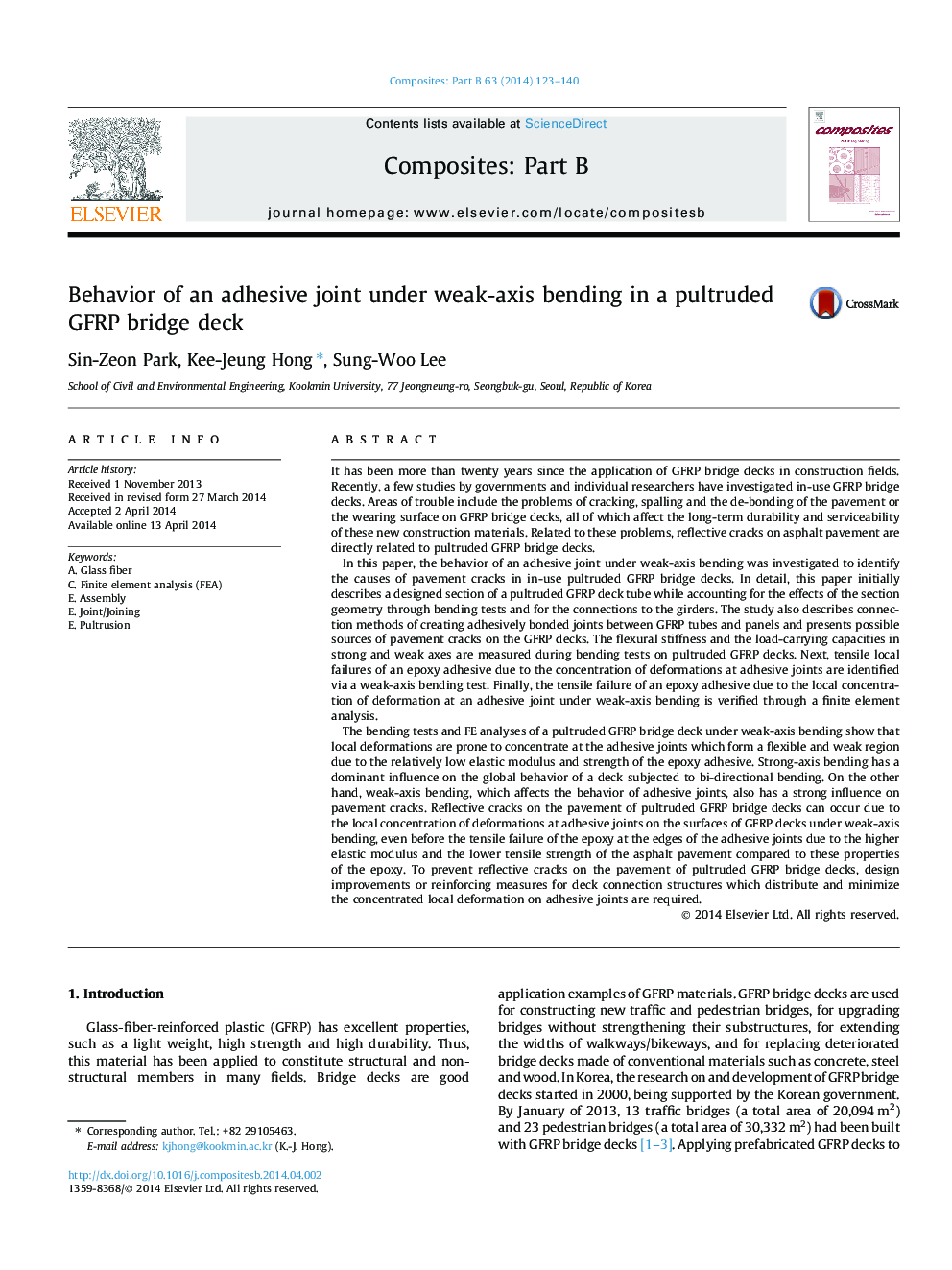| Article ID | Journal | Published Year | Pages | File Type |
|---|---|---|---|---|
| 817653 | Composites Part B: Engineering | 2014 | 18 Pages |
Abstract
The bending tests and FE analyses of a pultruded GFRP bridge deck under weak-axis bending show that local deformations are prone to concentrate at the adhesive joints which form a flexible and weak region due to the relatively low elastic modulus and strength of the epoxy adhesive. Strong-axis bending has a dominant influence on the global behavior of a deck subjected to bi-directional bending. On the other hand, weak-axis bending, which affects the behavior of adhesive joints, also has a strong influence on pavement cracks. Reflective cracks on the pavement of pultruded GFRP bridge decks can occur due to the local concentration of deformations at adhesive joints on the surfaces of GFRP decks under weak-axis bending, even before the tensile failure of the epoxy at the edges of the adhesive joints due to the higher elastic modulus and the lower tensile strength of the asphalt pavement compared to these properties of the epoxy. To prevent reflective cracks on the pavement of pultruded GFRP bridge decks, design improvements or reinforcing measures for deck connection structures which distribute and minimize the concentrated local deformation on adhesive joints are required.
Related Topics
Physical Sciences and Engineering
Engineering
Engineering (General)
Authors
Sin-Zeon Park, Kee-Jeung Hong, Sung-Woo Lee,
